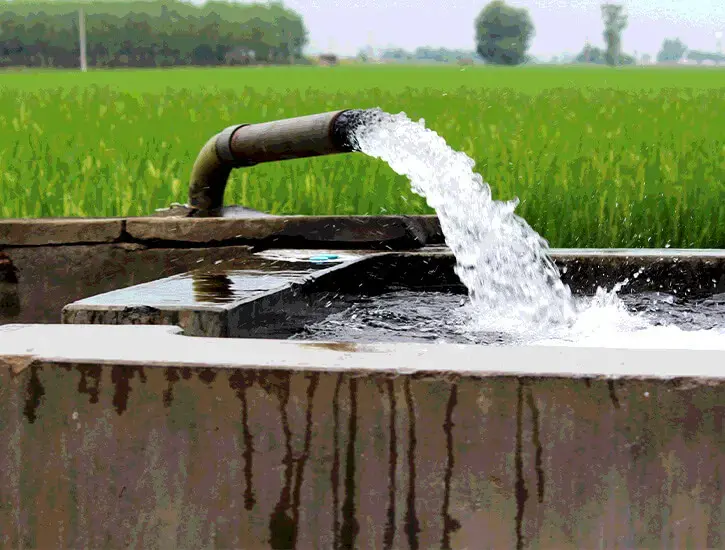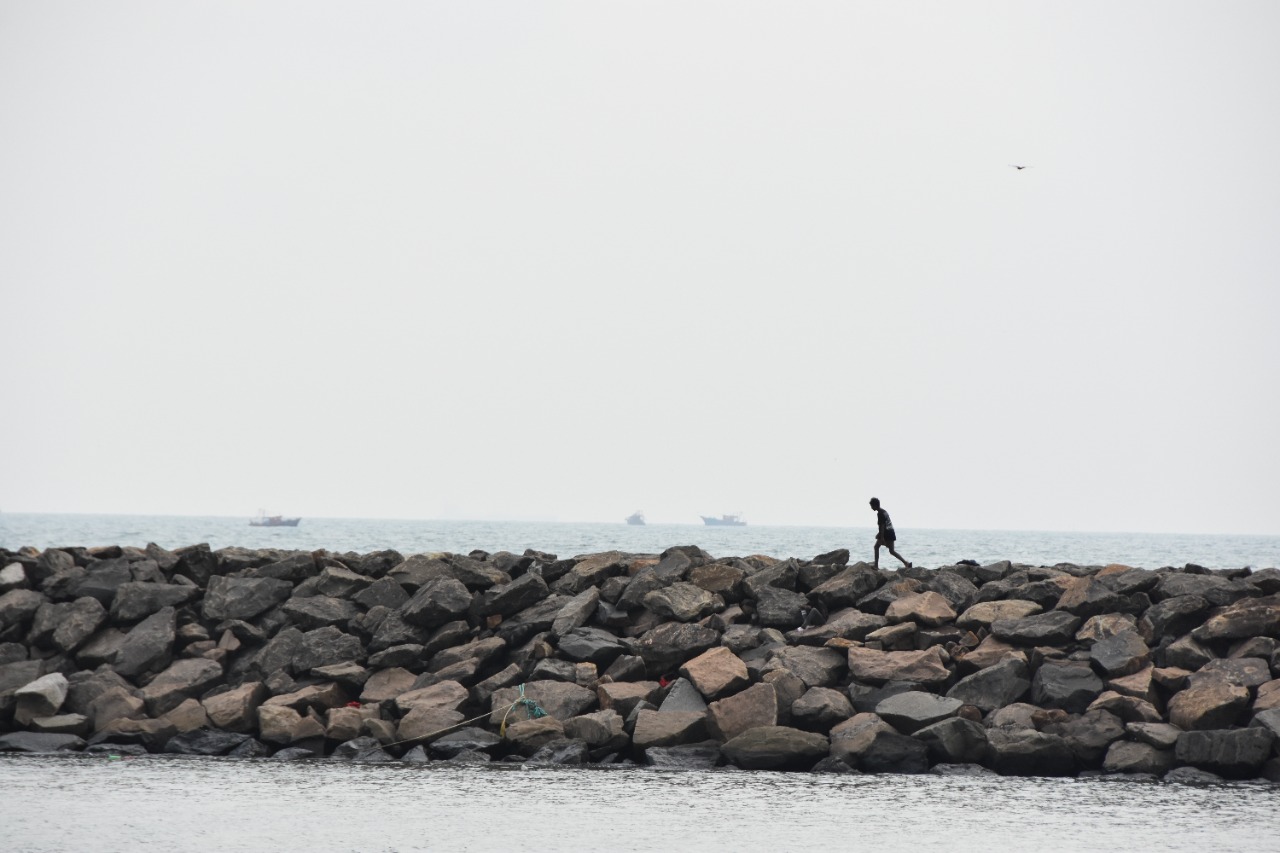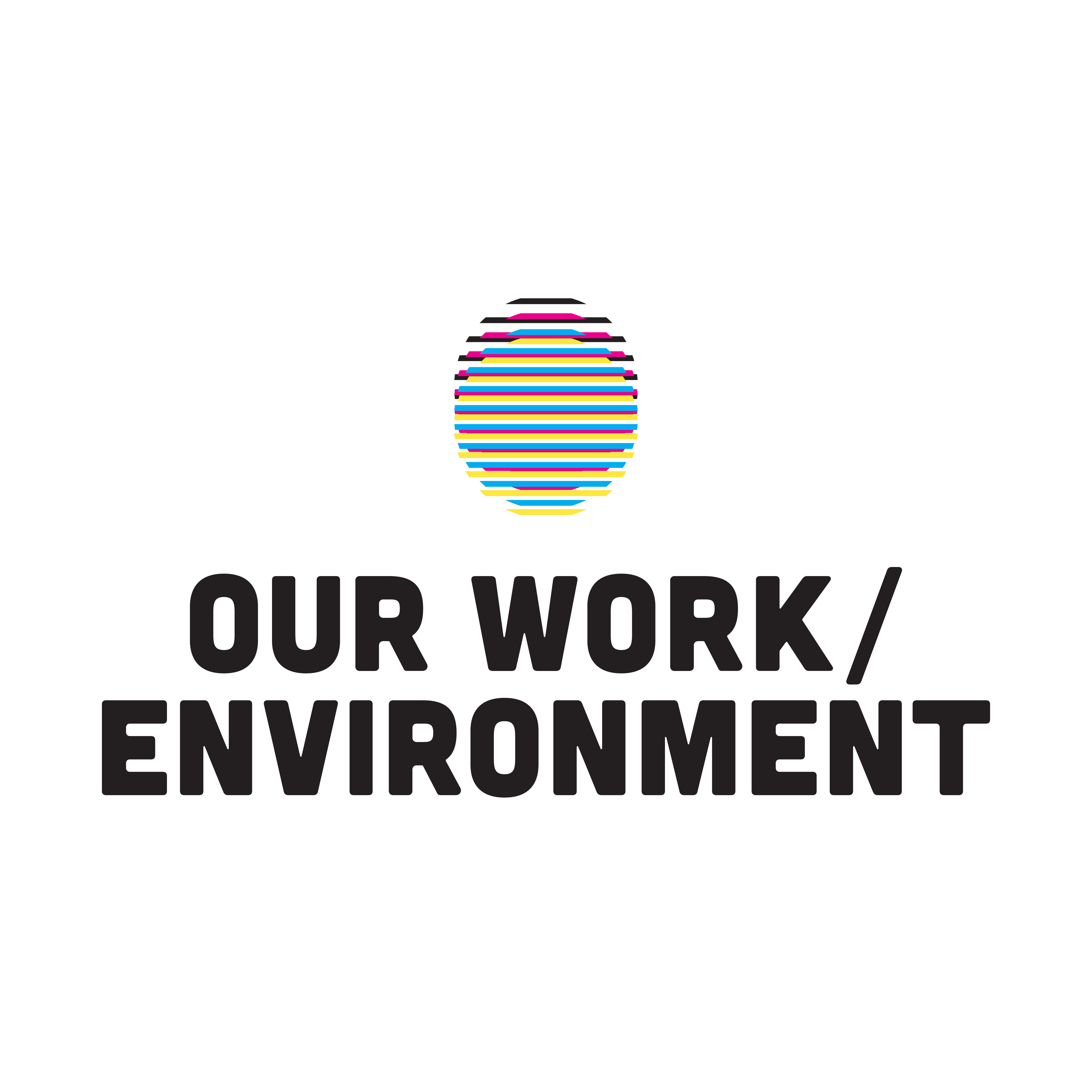
Just off a stony road hardly wider than a single car, a brown gate marks the entrance to Saravati Devi’s yard. There, on a recent September afternoon, a black cow grazed in the shade of a lone tree with the enthusiasm of a kid enduring sugar-free cereal. Devi lives and farms at the edge of a village in the Indian state of Haryana, part of the nation’s northern plains, where much of the country’s food is grown.
Grass fodder is one of Devi’s main crops, and though her cows still have enough to eat, it has not been a good year. Like nearly every farmer across this region, she also grows wheat and rice paddies, the main crops that state and central governments buy at a set price each year—each of which requires massive amounts of water, rice paddies in particular. Devi has long relied on rainfall to irrigate her land, but this year the monsoon did not provide. As climate change accelerates, monsoon season has become increasingly erratic, sometimes dropping too much water for the soil to absorb, sometimes dropping nothing at all. Although Haryana received slightly above average rain from June to September, hardly any came down between the start of August and the very end of September, when the sky suddenly seemed to disgorge all it had been withholding. This irregularity plagues the wider region: India’s drought-prone area has shot up 57 percent since 1997, and almost two-thirds of the nation experienced drought between 2020–2022, but in Pakistan this year, floods submerged one-third of the country and forced 33 million people from their homes.
There is no comprehensive canal irrigation system across the northern plain states of Haryana and Punjab, so, for most farmers, any water that doesn’t fall from above has to come from underground. To get to it, farmers rely on electric pumps that are far too expensive for most to afford without a massive loan, often two to three times their average yearly household income. To pay off the debt, farmers are forced to increase their production of higher margin, water-intensive crops like rice, in the process pillaging India’s largest aquifer system. Portions of it are plummeting by around three feet every year. The groundwater in around 60 percent of Haryana’s administrative “blocks” is overexploited. The water table is falling so fast that families buckling under the debt incurred from one well may soon have to finance another, deeper well—assuming the aquifer is still there to deplete.
This past July, Devi got a loan and installed her first pump. It was not an easy process.
Devi is a middle-aged widow in a profession where 89 percent of workers are men. Her face and hands bear the deep lines of someone who spends her days under the sun and in the dirt. When she talks about how she finally got a pump installed, the left side of her mouth curls up, revealing more of an incredulous grin than a relieved smile.
North Indian farmers without enough cash for a submersible pump have for years sought loans from informal money lenders, in part because bank loans until very recently involved all kinds of paperwork. Businessmen with cash to spare have often been more than happy to dish out loans with few questions asked—though with year-over-year interest rates so high they look like typos. Vikrant Patauda, whose father owns a farm in Haryana, said his family knows other farmers who have taken out loans with interest rates ranging from 24 to 50 percent. According to a 2022 report by Omvir Singh, Amrita Kasana, and Pankaj Bhardwaj, about 42 percent of Haryana’s farmers have taken pump loans from these kinds of informal money lenders at some point in the past.
The debt that finances these short-term solutions is incentivizing the region’s slow-motion apocalypse.
Devi tried to do the same but couldn’t find anyone willing to give her the cash. “I am a woman, and nobody gives women a loan,” she tells me. Instead, she turned to the bank, becoming one of the roughly 22 percent of farmers who have pursued the more formal route for their pump loans, according to the same report. Even that process wasn’t exactly smooth. “The bank kept on postponing the date, saying come tomorrow, come on this date,” Devi says. Workers started digging a hole for the pump five years ago, but they only finished putting it in the ground in July.
Despite all this, the number of farmers going to banks for pump loans appears to be on the rise. Punjab National Bank has overhauled the application process, drastically reducing paperwork and enabling direct transfers to farmers’ accounts, which could allow them to soak up much of the business done by money lenders. The bank’s first-year interest rate is usually around seven percent, but that number is deceptive. If the total isn’t paid back within a year, the rate can climb into the double digits, something Devi said was not made clear to her at the time.
Devi took out two loans in all—one for the pump and another for the installation—totaling roughly 10,285 USD. That’s an enormous amount of money in a country where a week’s worth of groceries for a family of four can cost less than 12 USD. But faced with increasingly unpredictable monsoons, farmers have no other choice. Paying for these pumps drives farmers into debt, compelling them to grow more water-intensive crops that will fetch guaranteed prices set by the government. This accelerates groundwater depletion, driving farmers to take out loans for new, deeper pumps, in turn driving them further into debt and necessitating the production of even more water-intensive crops, and so on and so forth. By formalizing the cycle of debt and aquifer depletion, Punjab National Bank will turn Devi’s groundwater into cash for themselves.
About a fifteen-minute drive from Devi’s farm lives another family who took a loan from the same bank to install a pump—only they did so twenty years ago. Jagtar Singh was just twelve years old then, and he now wears a full beard under a turquoise turban. He says his father got a loan of seven hundred thousand rupees, or about $63,600 in today’s dollars, but still owes the same amount in rupees due to the loan’s exorbitant interest rate. Even though they’re still paying off the first pump, the water table under their land has dropped to the point that Singh estimates they might have to take out a loan for a new, deeper pump in about two or three years. “We don’t have any other option,” he says.
When I was in Haryana in mid-September, raindrops pattered the dusty earth for a few moments each morning, quickly fading into the ground. By the afternoon, the sun had pushed the clouds away.
Rainfall and canal irrigation have historically been sufficient for North Indian farmers, but in the early 1960s the central government desperately wanted to stop relying on wheat imports for the survival of its growing population—which required a more reliable water source. India had suffered a series of devastating famines under British colonial rule, largely caused by the British prioritizing the stomachs of its citizens and soldiers over the wellbeing of Indians whom the empire viewed as subjects. During the Great Famine of 1876 to 1878, six to ten million Indians died. As many as three million perished in a similarly avoidable catastrophe in 1943.
Avoiding this kind of disaster in the future required a reenvisioning of the nation’s approach to agriculture. In the latter half of the 1960s, North Indian farmers began to plant “Green Revolution” seeds that included a hyper-productive variety of wheat. By 1968, this new crop was producing yields never seen before. Rice paddies were introduced in the years that followed. The need for water increased in tandem, and so the Indian government and the World Bank started subsidizing a small number of submersible pumps and a greater number of their less-powerful predecessors—shallow tube wells—which began to pull water from the ground, enabling a more consistent watering schedule.
The amount of irrigated land in North India soared over the following decades: it nearly tripled in Haryana between 1975 and 2012, and it grew from 70 to 98 percent of Punjab over approximately the same period. This expansion was primarily enabled by switching from canal irrigation to groundwater pumping: reliance on canal irrigation plummeted from 77 to 42 percent in Haryana between 1966 and 2013. Year after year, agricultural output increased until yields began to taper off at the start of the 1990s. And when shallow tube well and pump subsidies started to dry up in the mid-1980s, farmers had to find money elsewhere. India began liberalizing its economy in the early 1990s, allowing money to change hands with ease, and farmers quickly discovered that they could now get the cash they needed in the form of loans. “At that time there was no idea about sustainability,” says Tony George Puthucherril, a professor of water law and policy at O.P. Jindal Global Law School in Haryana. “Now we have reached a situation where in the entire northern part of India we have the water crisis.”
By 2012, there were 1.3 million shallow tube wells and submersible pumps operating in Punjab alone. More than seven hundred thousand operate in Haryana. As in Punjab, submersible pumps are now the dominant means of groundwater irrigation there; the whole region is shot through with giant straws guzzling the main resource that sustains it. Each new pump has to be dug deeper than the one that came before, and their life expectancy is much less than it used to be. Jagtar Singh’s pump has worked for two decades, but he’d be lucky if his next one lasts even half as long.
The debt that finances these short-term solutions is incentivizing the region’s slow-motion apocalypse. The only way to stop the plunder is to reimagine the agricultural economics that have lorded over northern India for more than half a century.
Submersible pumps may be extremely expensive to purchase, but most of them cost little or nothing to operate once they’re installed. Electricity for pumps in much of Northern India is either free or close to it, so farmers leave them running around the clock. Once groundwater is accessible, farmers can slurp up however much they want because there is no law limiting individual groundwater use or requiring them to monitor how much they take. Given the debt farmers go into to install these machines, why not exploit the water and complimentary electricity to get as much out of their pumps as possible?
Farmers also need a viable alternative to cash crops like rice—but that switch can’t be made too quickly.
Instead of providing unlimited electricity, according to Vivek Grewal, a hydrogeologist at Geovale Services, a company that maps groundwater, governments should give farmers a lump sum of money at the start of each year based on past electricity usage. If families decide to buy electricity because their crops are likely to grow well and get good prices, then they can. If not, they keep the cash, eliminating complete dependence on what their fields produce and incentivizing farmers to be more thoughtful about water usage.
Farmers also need a viable alternative to cash crops like rice—but that switch can’t be made too quickly. Eliminating set prices for paddies would give growers fewer reasons to keep planting it, but, absent federal subsidies, it would also plunge farmers into financial chaos. Anyone who suggested doing so to a politician would get chased out of their office. “Paddy is going to create a big problem for India in the future,” ventures Annasamy Narayanamoorthy, an expert on agricultural economics and rural debt at Alagappa University. “Unless a great change occurs in the procurement policy . . . this problem will continue.” Perhaps a better plan, he suggests, would be to stop increasing the price the government pays for the crop every year. At the same time, the government could begin incentivizing the production of less water-intensive crops, such as mustard, oil seeds, and pulses like chickpeas, green peas, and lentils. Over time, as rice became less lucrative, farmers could swap it out for something that didn’t put so much stress on the aquifer.
But any changes to agricultural policy will need to be accompanied by an intense focus on groundwater restoration. Some farmers have already begun. Narender Sandhu and his father, Baldev Singh, grow paddies, wheat, and potatoes in a village not far from Devi’s. Sandhu and Singh are on the wealthier side of farmers, so they were able to purchase a different kind of pump that collects rainwater and drives it back into the earth. This is the right idea, but rainwater collection on this scale falls far short of what’s needed to revive an entire aquifer system on the brink of irreversible lack. With rainfall as erratic as it is, relying on replenishing pumps is kind of like shaking out your couch cushions for spare change in hopes that it’ll fill up your bank account.
What’s needed is something more holistic—and maybe something more than mere policy can provide. Communities across North India could dig rainwater catchment areas that funnel water under everyone’s land, but Himanshu Kulkarni, who heads the Advanced Center for Water Resources Development and Management in Pune, thinks that such grand plans are only possible once people understand that groundwater is a “common pool resource.” He knows it sounds messy, but he says this will only happen by putting politicians, scientists, and farmers into the same rooms and hashing out how to conserve the aquifer system without causing chaos in the lives of people who most depend on it. “I think you can’t solve a common resource problem through regulation alone,” he said. “You have to start from the ground up.” Where government intervention can help, though, is by addressing the cycles of debt that compel farmers to pillage what sustains them.
Politicians often talk about forgiving existing debt, but there is hardly any talk of abolishing the system that would cause farmers like Devi to fall right back into the same trap. Until that changes, she will have to keep pulling up water from her land on the assumption that it will always be there. If that collective assumption ever proves wrong, the only remaining certainty in Devi’s life will be that she must find a new way to live.














